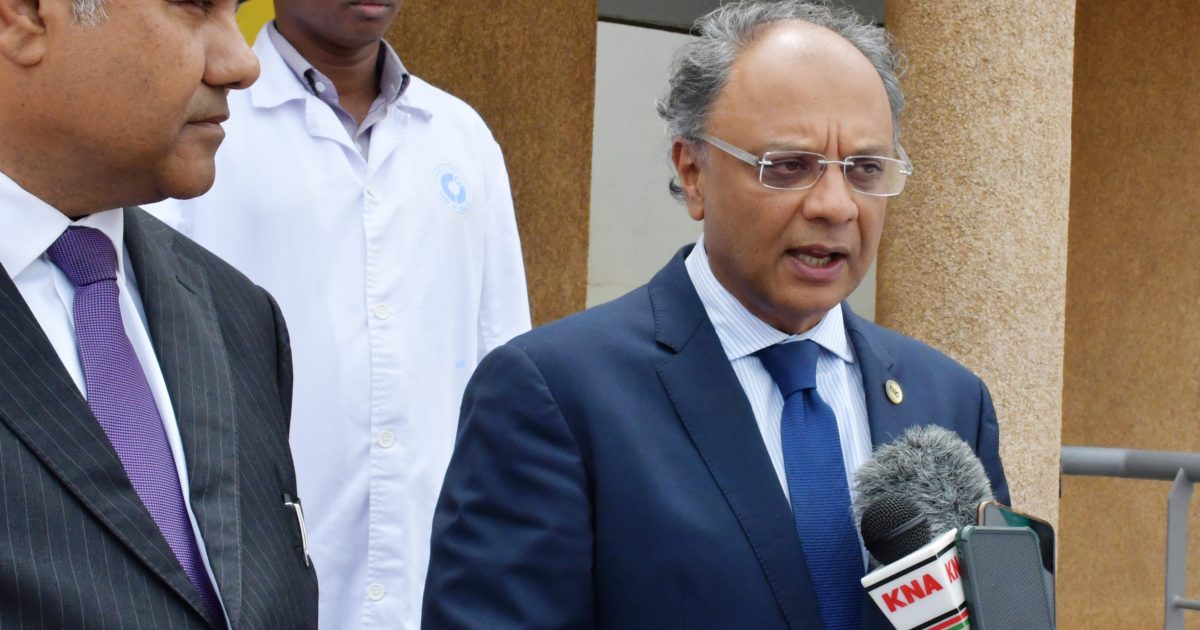Kenyan manufacturers have been challenged to tap into the huge Democratic Republic of Congo (DRC) market, after its inclusion in the East African Community (EAC), by becoming innovative and globally competitive.
EAC Principal Secretary (PS) Dr. Kevit Desai said industrialists should target to increase their production capacities by doing value addition, so as to be able to meet the demand of the 300 million EAC population.
Speaking during a tour at Capwell Industries in Thika that manufactures maize flour and rice, the PS said the six-nation EAC market has become huge, opening up new opportunities for manufacturers to trade.
He said DRC, having a market of over 300 million in terms of population, both locally and the neighboring countries, offers Kenyan manufacturers a large market for their produce.
“DRC inclusion in the EAC has offered a big opportunity to our manufacturers, to think big and increase production by growing competitive, innovative and diversifying their production capabilities.
“Value addition has the highest transformative ability, for example, in pyrethrum it increases its value 25 times thus higher returns,” said Desai.
The PS said the impact of increased industrialization would be opening up opportunities for new jobs, offering markets for local produce and consequently fighting poverty in the region.
He said despite the EAC being a big market, only 12 percent is traded within the market in terms of intra-trade compared to other blocks like the European Union (EU) that trade at 60-70 percent, with Kenya being the largest exporter, commanding a growing figure of Sh250 million dollars.
Desai challenged the manufacturers to take advantage of the trade avenues to match exporting giants, given that the new bloc is the fourth largest in the world after India, China and USA population-wise.
The PS said despite EAC opportunities, local manufacturers will be able to access markets in all the other 44 countries in the continent, translating to over 900 million people.
“This points to an enormous potential that requires our manufacturers to enhance productivity and remain relevant. The future of manufacturing in the country is bright and has room for expansion. The manufacturers should see the gaps, use technology and move to the market,” said the PS.
The PS opined on the need to review the common market protocol, to address the challenges that the private sector has witnessed in areas of rules of origin, non-tariff barriers, and the ecosystem of manufacturing.
He also called for more collaboration between the manufacturers and the government on market access and promotion of compliance in regulations and policy frameworks.
Kenya Association of Manufacturers Chairman, Rejan Shah, decried the high taxation and cost of raw materials, transportation costs and tariffs, saying they have frustrated many manufacturers and kept others out of the market.
Rajan, who is also the Managing Director (MD), Capwell industries in Thika called on manufacturers to become competitive, look for markets abroad, improve efficiencies and invest in technology.
“We have lots of lost opportunities because we have about 6,000 tariff lines of items that can be exported duty free into the US, but we only do about 10. The manufactured component that we export is about 30 per cent and needs to move up to 70-80 per cent, to match high valued exporters such as Vietnam,” said Rajan.
By Muoki Charles





